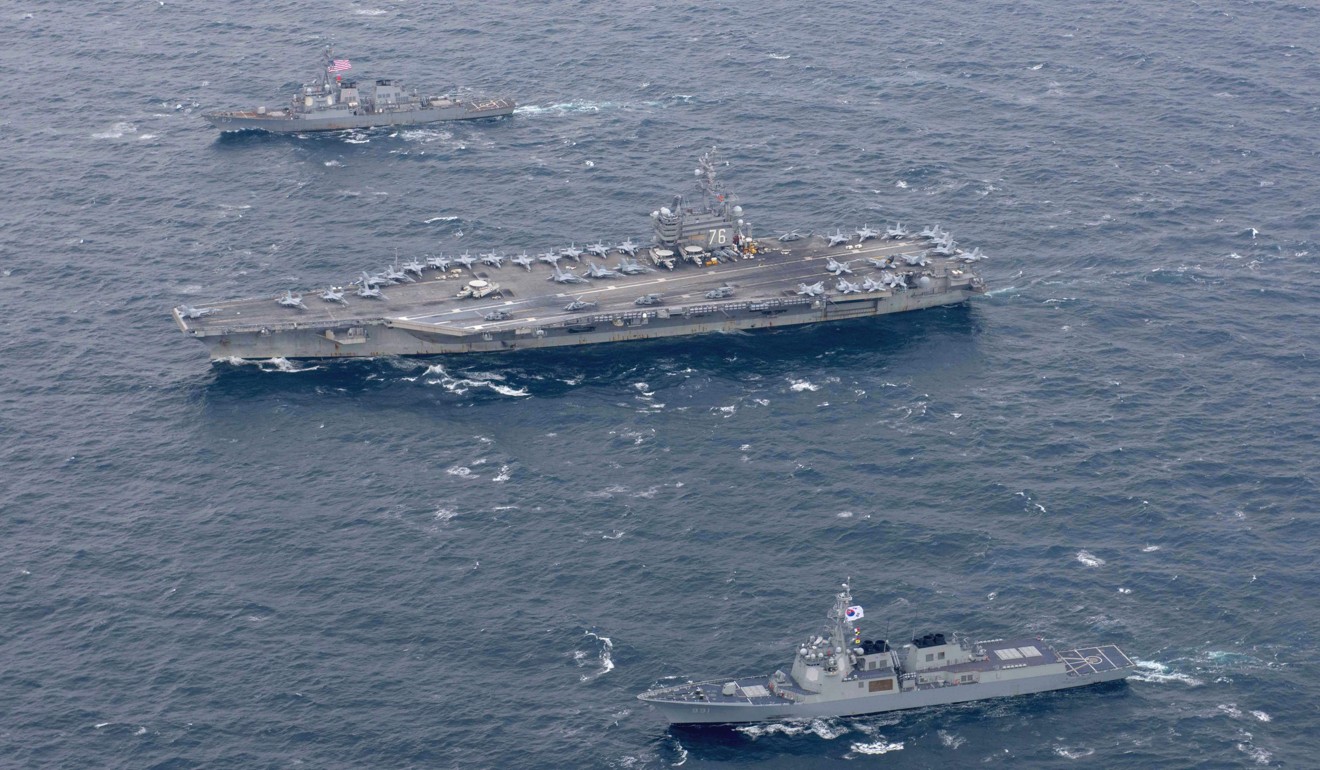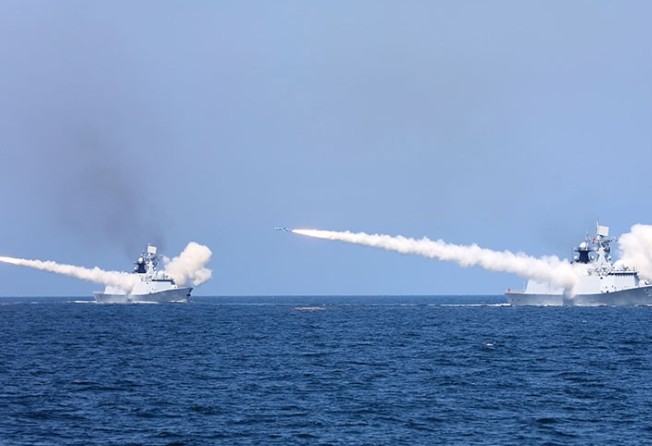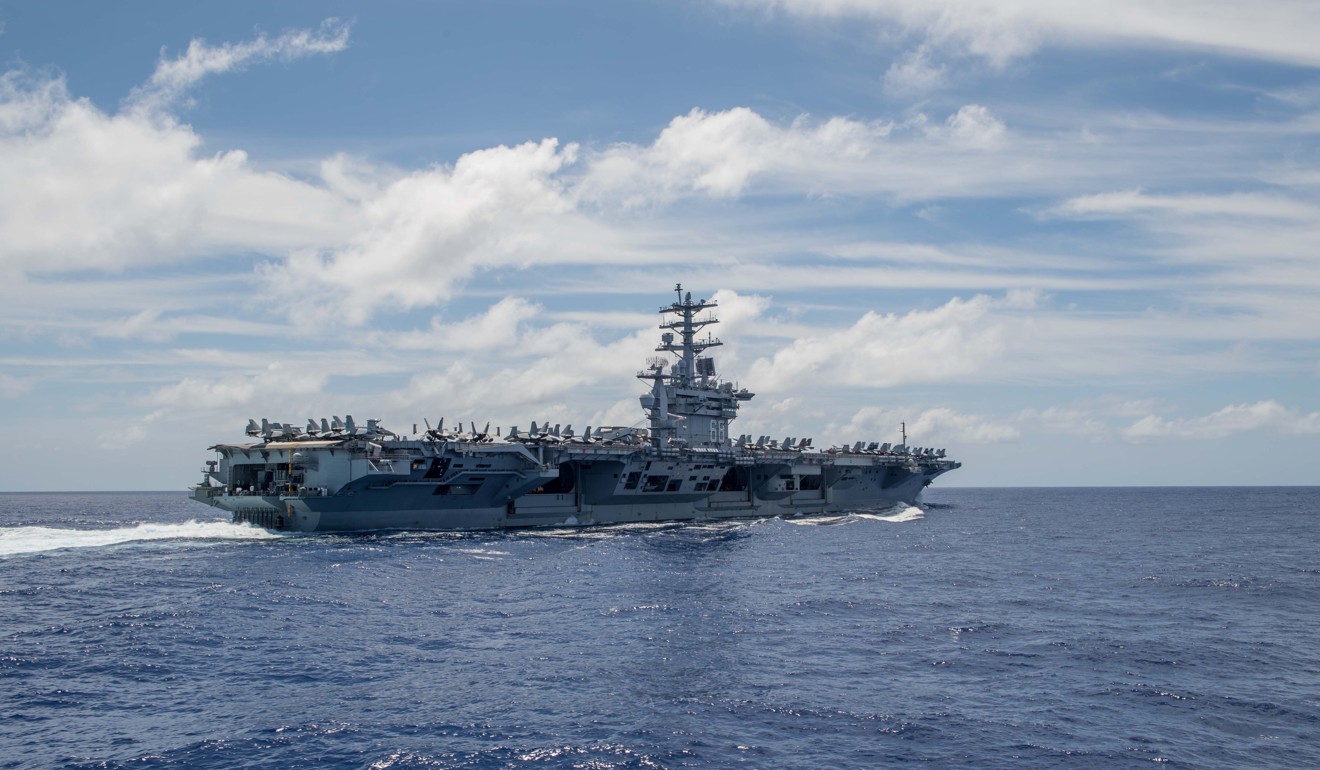
How US, Russian and Chinese navies stepped up their missile drills amid ongoing tension over North Korea
Major powers conduct series of drills with allies in region as concerns over Pyongyang’s weapons programme intensify

The deployment of three US aircraft carrier groups in the Pacific has drawn harsh criticism from Pyongyang, which sees American military drills as a preparation for an attack on North Korea.
The ongoing tensions over the North’s nuclear tests and growing concern that the rising tensions could lead to conflict have prompted other countries to conduct exercises in the region.
As US President Donald Trump prepares for his visit to Asia, here is a recap of how the regions major powers have been strengthening their defences.
China
Since late July, China has carried out several known sets of drills in the Yellow Sea, off the west coast of Korean Peninsula.
The first was a three-day exercise marking the 90th anniversary of the founding of the People’s Liberation Army.
A second four-day drill was conducted a week later after Pyongyang’s second intercontinental ballistic missile test on July 28.
Land and air force personnel have carried out exercises near the area, including one on September 5 simulating a missile attack.
The four-day drill within a cordoned off area between the coast of Qingdao and the waters east of Lianyungang – a potential flashpoint for regional security – was aimed at sending a message of deterrence and showing its military might to North Korea, the United States and others in the region, observers said.

Russia
Moscow launched a series of missile tests this week, launching four rockets aimed at targets on the other side of the vast country.
One intercontinental ballistic missile was fired from the Plesetsk cosmodrome in northwestern Russia on Thursday, hitting a target in Kamchatka in the far east of the country, the Russian defence ministry said.
A submarine in the northern fleet also fired a missile from the Barents Sea towards the same area.
The same day a submarine in the eastern Sea of Okhotsk fired two missiles in the opposite direction towards at a target in Archangel oblast.
The tests were part of a series of wide-ranging exercises to test the coordination of Russia’s nuclear triad of ground-based missiles, submarines and aircraft, according to a spokesman for President Vladimir Putin.
Russia and China also engaged in a joint land and sea exercise in late September less than 160 kilometres from the North Korean border with Russia.
The eight-day drill was the second stage of the two countries’ Joint Sea-2017 exercises

US, Japan and South Korea
Two American aircraft carrier groups – the Theodore Roosevelt and Nimitz – recently joined forces with the USS Ronald Reagan, which is based in Japan and has been engaged in exercises with South Korean forces in the past week.
The exercises ran over two days in the waters off the coasts of South Korea and Japan and included four ships from each country equipped with the Aegis Combat System, according to a statement the Joint Chiefs of Staff provided to South Korea’s Yonhap News.
The Aegis system uses powerful radars and computer systems to track intermediate range ballistic missiles in their mid-course phase above the atmosphere and intercept them.
The Aegis-equipped ships form part of the US Missile Defence Agency’s network to counter ballistic missiles.
Tho recent trilateral exercises were designed to coordinate anti-missile defence cooperation capabilities between the US and its allies.
The latest exercise, the allies’ fifth trilateral drill, followed a series of North Korean provocations pushing the three countries to tighten their military cooperation.
The move has drawn harsh criticism from North Korea, which sees any US military drills as rehearsals for an attack on Pyongyang.